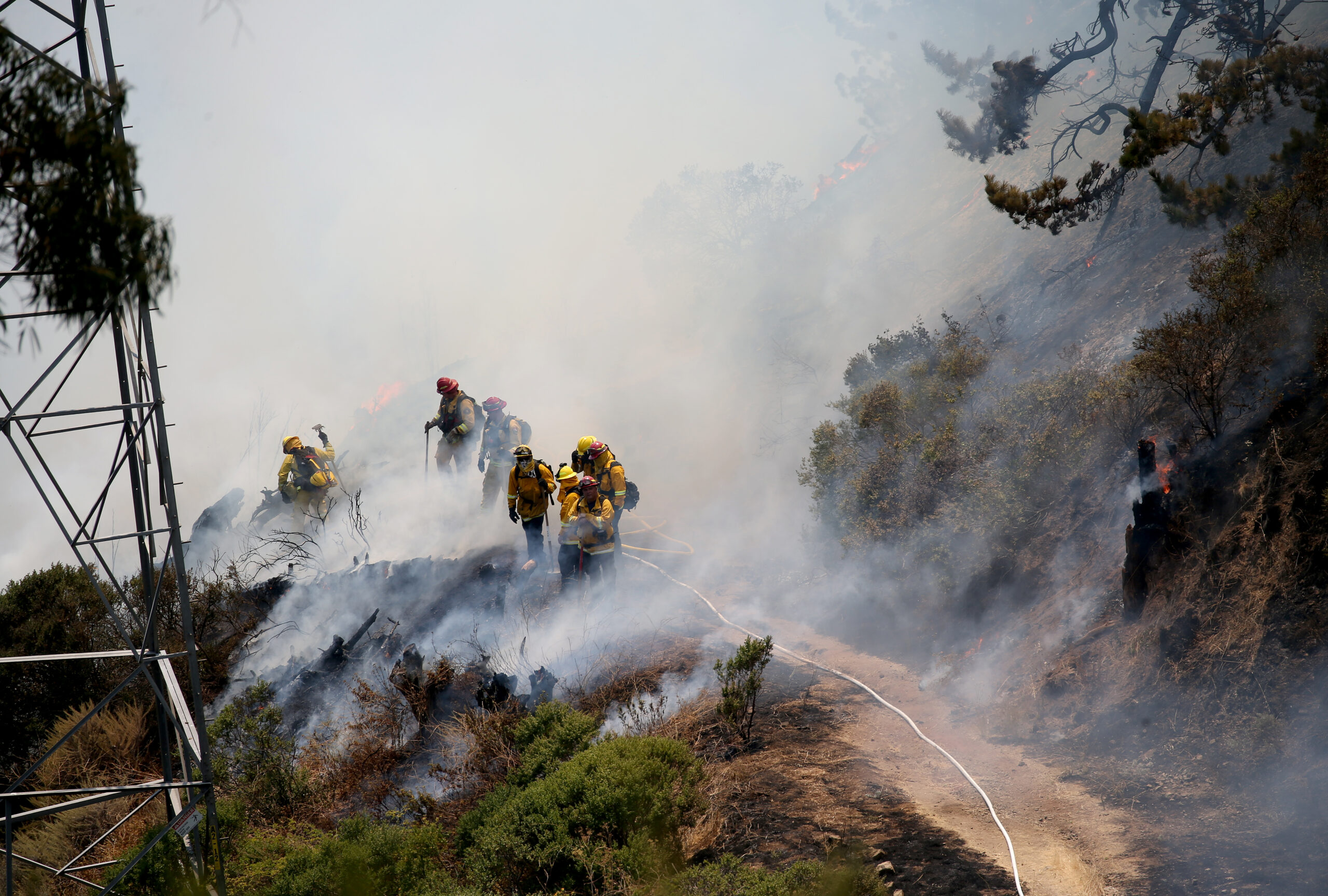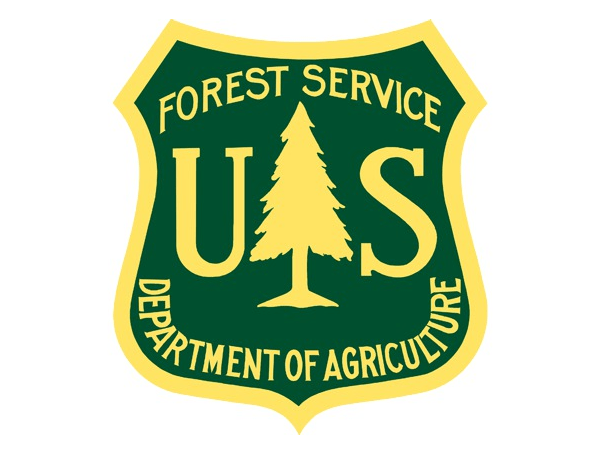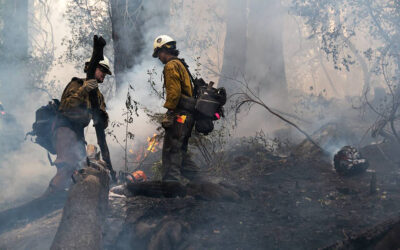
Firefighters douse flames from a vegetation fire in the hills along Grizzly Peak Boulevard in Berkeley, Calif., on Wednesday, August 2, 2017. (Jane Tyska/Bay Area News Group)
Apr. 17—About 900 Berkeley homeowners will have to clear a five-foot zone of flammable materials from around their houses, if the city’s council next month upholds their unanimous vote this week to impose a “Zone 0” rule to help stop spread of wildfires.
The matter is set to come up for final approval May 6. If passed, the rule would bring the East Bay city into early harmony with a California-wide Zone 0 five-foot rule expected to be approved at the end of the year.
Fire experts have increasingly pointed to wind-driven floating embers as a primary contributor to major wildfires including the devastating 2017 Tubbs Fire that saw embers cross Highway 101 and set the suburban Santa Rosa neighborhood of Coffey Park afire. Clearing vegetation, fences and other flammable materials from around houses is seen as a crucial tactic in keeping embers from igniting homes.
“Doing this across a thousand homes to start and maybe several thousand homes over the years ahead, it is a big ask,” Berkeley council member Brent Blackaby said before the vote Tuesday, “but the wildfire risk to Berkeley also presents a big existential threat to our community. We know the state’s coming down with these requirements anyway.”
The rule would affect homes in the hills in the east of the city along Grizzly Peak Boulevard and in the Panoramic Hill neighborhood, considered at “very high” fire risk.
Berkeley city staff in a report to council submitted before the meeting said the most likely scenario for a catastrophic blaze in Berkeley would involve a wildfire starting in Tilden or Wildcat Canyon regional parks east of the city, with flames pushed westward by seasonal Diablo Winds.
“If the properties at Berkeley’s eastern edge are not prepared to receive wildfire, they may facilitate a wildland fire’s transition to a structure-to-structure conflagration that would burn west toward the Bay until the wind stops orchanges direction,” the report said.
Berkeley fire officials said at Tuesday’s meetings that homes themselves fuel the spread of fires as they relay flames across a broader area, and wooden fences carry fire through residential areas as well.
Berkeley Fire Department chief David Sprague noted at the meeting that this year’s massive fires in Los Angeles destroyed thousands of homes despite the city’s substantial numbers of fire departments, engines and firefighters. “If we don’t do this work, no amount of firefighting resources are going to stop these fires,” Sprague said.
Many residents of affected areas who spoke at Tuesday’s meeting supported the Zone 0 requirement. “I’m not too happy about what (the rule) means for my garden, but I’ve accepted it,” said Eric Weaver, who lives near Grizzly Peak and added that he had already started clearing materials in anticipation of the requirement.
Dara Schur said she has lived on Grizzly Peak for more than 30 years, and had also taken advance Zone 0 measures. “It was hard to take out our camellias, but we don’t want our house to burn down,” Schur said.
Others took issue with the mandate. “It’s a bit draconian to expect people to rip out existing vegetation that does not pose a fire hazard,” said Gina Rieger. “You could have somebody with a succulent garden that they’ve tended for years and years and years.”
Berkeley fire officials explained that even plants like succulents can drop combustible, dead material, and also gather wind-blown debris that can ignite.
David Edwardson told councilors he lived in the affected area in the house where he was raised, and Zone 0 would “be a major financial stress” for him on his $27-per-hour income. “Two years ago I reached into my retirement fund and pulled out $20,000 to build a new fence and if this happens I’m going to have to chop half of that down and try to come up with money to replace it with chain link or whatever,” Edwardson said.
Sprague said a grant from Cal Fire and city hazard-mitigation funds could be used to help residents who have difficulty complying with the rule. Coun. Mark Humbert said he supported financial help and low- or no-interest loans for those needing assistance to comply.
Santa Clara County FireSafe Council CEO Seth Schalet applauded Berkeley’s preliminary passage of the Zone 0 rule. “It’s excellent,” Schalet said. “I give them credit for being aggressive.”
Schalet noted that resistance to such rules among some residents in areas of severe fire risk is sometimes grounded in concerns about affecting the appearance of their properties, and often rooted in uncertainty about whether such adaptations will help them as insurers drop coverage and boost premium costs.
Berkeley assistant fire chief Colin Arnold said plants in small, moveable non-combustible containers would be exempted under the regulation, as would mature trees taller than the structure that are properly limbed and trimmed.
Arnold said fire officials are poised to ensure affected homeowners are informed about the need to comply with the regulations, and the department is seeking ways to provide resources to help.
If the city passes the mandate, violators would face fines starting at $100, but it is rare for such fines to be levied, as most homeowners end up complying with fire-safety rules, Arnold said.
Originally Published: April 17, 2025 at 4:22 PM PDT
© 2025 Silicon Valley, San Jose, Calif.. Visit www.siliconvalley.com. Distributed by Tribune Content Agency, LLC.




